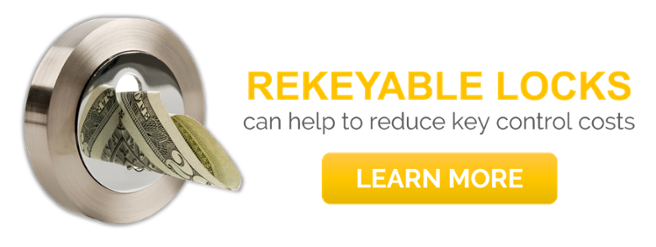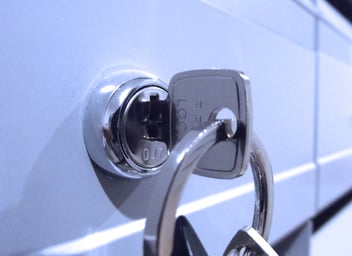Lock Rekey Kit Best Practices to Control Costs
A lock rekey kit is exactly what you might imagine. It is a kit that can be used to change the locks in an organization, without having to call a locksmith. There are no tools required, no hardware removal, and you do not have to have the expertise of a locksmith to perform a rekey. A special key called a Step Change Key is all that is needed to reconfigure all affected locks to the next “step”. These kits also include the next step’s set of operating keys. Everything that is needed to change the locks and restore physical security is included in one kit that can be secured inside of a safe and is ready for immediate use. This method of rekeying is fast, easy and efficient, but it is also incredibly cost-effective, when compared to the cost to have a locksmith rekey locks. Organizations that adopt this DIY method of rekeying stand to save around 80%.
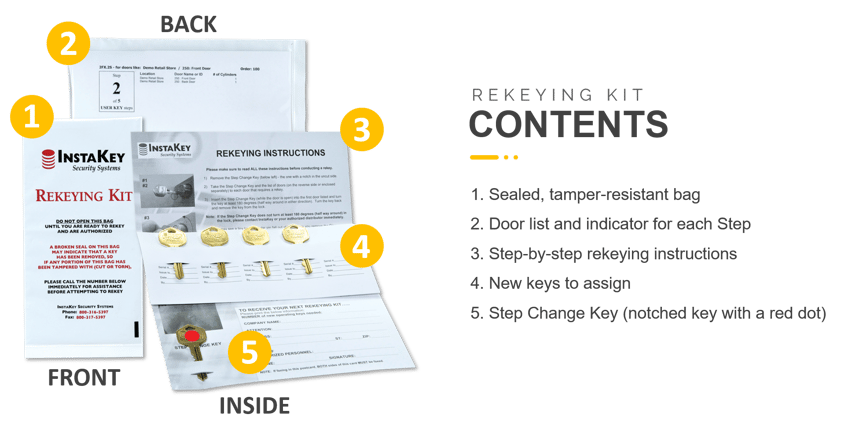 There are additional cost savings to be gained when rekeying kits are used in conjunction with other critical components of key control. Here are some best practices to continuously control costs in a key system using a lock rekey kit.
There are additional cost savings to be gained when rekeying kits are used in conjunction with other critical components of key control. Here are some best practices to continuously control costs in a key system using a lock rekey kit.
Use a Lock Rekey Kit Only as Necessary
Rekeying without a locksmith is significantly cheaper, but if you have restricted keys (keys that cannot be copied), there is an opportunity to further reduce costs by reusing or transitioning keys. When keys cannot be copied, there is a higher level of security. Administrators can be certain that there are no copies of keys in circulation and all issued keys remain the only keys to keep track of. When these conditions exist, keys can be transitioned from one key holder to the next, in the event of key holder turnover. With restricted keys, there is no need to change the locks every time an employee or key holder transitions out of an organization. This saves the cost of purchasing a new lock rekey kit each time a key holder separates.
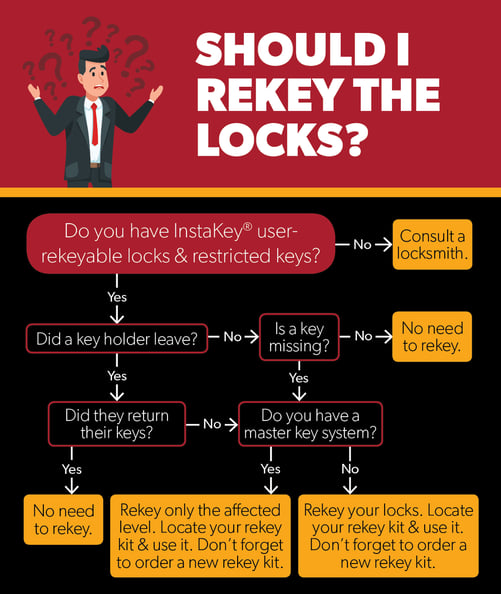
Track Data on Rekeys and Transitions
From a leadership perspective, it is important that teams responsible for keyed security keep track of how many rekeys are performed, as well as how many keys are transitioned to new/other employees on a monthly basis. Comparing these metrics can provide opportunities for training on when to rekey and when to transition keys. Rekeys and key transitions can be tracked in a simple spreadsheet, or through cloud-based key tracking software, automatically. The anonymous client data seen here is an example of a significant opportunity to train employees to contribute to cost savings:
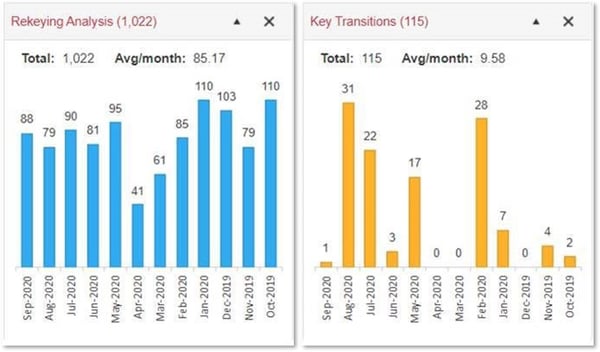
Dealing in round numbers, this client is doing nearly 10 times as many rekeys as key transitions. This comparison should show the opposite if teams are properly trained to recover keys. When rekeys far outnumber transitions, it is important to ask why and determine:
- Do managers understand the importance of getting keys back upon separation?
- Do key holders understand the importance of returning keys upon their departure?
- Are there agreements in place between the organization and employees that hold key holders accountable with final paycheck penalties for not returning keys?
- Are these rekeys occurring due to lost or stolen keys?
As lock rekey kits average $40 each, this client is spending an average of $3,400 per month on potentially unnecessary rekeys. This is still significantly cheaper than paying a locksmith around $200 per rekey event, but there is clearly an opportunity to further reduce costs.
Audit Key and Key Holders
Regularly auditing keys and key holders can also help to control costs where rekeying kits and restricted keys are used. Auditing without restricted keys is almost pointless, because keys that get copied may or may not be known by administrators. But, when keys are restricted, auditing becomes a helpful practice in keeping track of keys and who’s custody they are in. At that point, key holder compliance increases, resulting in fewer lost keys and a reduction in rekeys needed.
If restricted keys can be individually serial numbered, there’s no need to be on-site with key holders because listing keys in custody by serial number is easy and anyone that can receive emails or text messages can participate in an audit.
We recommend using one of the following methods to audit:
- Listed Audit: Send out a list of key serial numbers to key holders via text or email and ask them to confirm what they have.
- Unlisted Audit: Send an email or text asking key holders to respond and list the key serial numbers they have. Match responses with key records on file.
No matter which method you use, if key holders can’t account for all of the keys, then you know you have a potential breach. If you’re in grocery or retail and the store in question is a high shrink store, rekeying should be strongly considered. This is where your lock rekey kit comes in handy.
Track Keys to Key Holders
Keeping track of who has keys is another critical element to effective key security, and a subsequent reduction in costs. Keeping a simple key log can make a big difference in how much is being spent on materials for a key system.
Organizations that track keys to key holders improve operational compliance, get more keys back upon separation, and consistently reduce their spend on key control because they aren’t purchasing as many keys or lock rekey kits to change the locks.
Lock rekeying kits are a great way to reduce spending associated with key control. But, that is not the only consideration to be made in efforts to maintain keyed security and control costs. It takes a proactive program. InstaKey offers such a program and alongside our innovative user-rekeyable locks, restricted keys and key tracking software, we partner with our clients and become part of the team to focus on controlling keys, access, and cost. We do this to give our clients time to focus on all of the other important initiatives requiring their attention.


